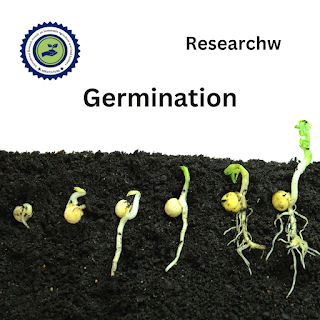Germination is the process by which a seed begins to grow into a new plant. It involves several key steps:
Imbibition: The seed absorbs water, causing it to swell and activate metabolic processes within.
Activation of Metabolism: Enzymes within the seed become active, initiating metabolic pathways necessary for growth.
Respiration: The seed begins to respire, breaking down stored nutrients (such as carbohydrates, proteins, and lipids) to provide energy for growth.
Cell Expansion: Cells within the embryo of the seed begin to elongate and divide, causing the seedling to push through the seed coat.
Root and Shoot Emergence: The radicle (embryonic root) emerges first, followed by the hypocotyl (embryonic shoot). The radicle anchors the seedling and absorbs water and nutrients from the soil, while the hypocotyl elongates to lift the cotyledons (seed leaves) above the soil surface.
Photosynthesis: Once the cotyledons emerge, they begin to photosynthesize, providing the seedling with energy for further growth.
Germination is influenced by various factors including water availability, temperature, oxygen levels, light, and seed dormancy. It is a critical stage in the plant life cycle, marking the transition from seed to seedling and the beginning of independent growth.
- #SeedGermination
- #PlantGrowth
- #GreenThumb
- #GardenersWorld
- #GrowYourOwn

No comments:
Post a Comment